Step 4: Interpret the Data
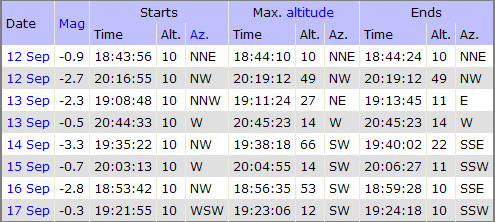
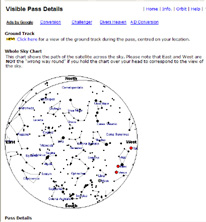
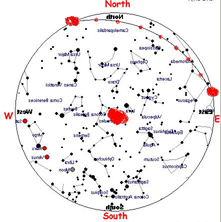
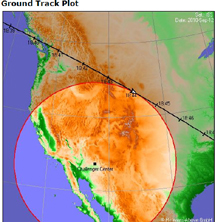
Be sure to continue down to the bottom of the page to see larger versions of the 2nd-4th images...the explanation of those is in the last paragraphs of this page.
There you'll also find examples of what constitutes more favorable opportunities for viewing the ISS.
The table above provides the necessary data to determine if the ISS will provide a favorable appearance for viewing. Relatively low-flying satellites are visible
as they orbit the earth because they are reflecting sunlight at a relatively shallow angle. The earth is always casting a shadow out into space
opposite the direction of the sun. Satellites become invisible when they pass into the shadow of the earth.
Date: Self Explanatory. Click the date and you'll link to a page that shows "Visible Pass Details"...specifically a constellation map that shows the relative path of the
ISS during visibility for that pass. A link from that page shows the ground track of the satellite...very useful for easily determining the direction and visibility. The "Visible Pass" and "Ground Track" are the other screen shots shown on this page.
Mag: Apparant Magnitude of the ISS during this pass. Celestial objects are assigned a magnitude rating relative to other celestial objects. Negative numbers mean brighter. Positive numbers are dimmer.
Starts: Time/Altitude/Azimuth the ISS should become visible 10-degrees above the horizon. By default, Heavens Above uses 10-degrees. The Azimuth is the approximate compass heading it starts the
appearance.
Max. altitude: Time/Altitude/Azimuth the ISS should be visible at the mid point of its pass. The larger the number the better, as it will be higher in the sky.
The horizon is 0 (zero) degrees; straight overhead is 90 degrees.
Ends: Time/Altitude/Azimuth the ISS disappears from view during the pass.
Below are some relavant screen shots, specifically the "Visible Pass Details" mentioned above, and an annotated "mirror image" of the same image.
The whole sky chart shows the constellations at the time of the pass...as well as a line that shows the track of the ISS. Too bad the track line isn't a different color. That's why I did
the mirror-image and sprayed some red paint along the line and at the beginning and end. The big red blob indicates directly overhead.
You should try to imagine the sky is like the inside of half of a big beach ball and we're inside the middle of it on a flat plane where the beach ball was cut in half. The outer circle represents the horizon 360 degrees
around us, so the constellations on this diagram are projected onto the inside surface of the beachball. Those near the outer circle are closer to the horizon while those in the exact middle of the circle
are directly overhead and all others are inbetween. Easy as pie, right? Therefore the line (path of the ISS) in this case is just above the horizon if you look toward the northeastern horizon.
To reinforce what I just said, take a look at the third image and you'll see the path is just on the edge of the circle that represents where sunlight is streaming past the earth (way up in the sky, so as to make the ISS visible) and the ISS is just skirting the edge
of the circle. Bottom line: the pass on the 12th visible from the coordinates we entered is not very favorable at all: It's too low in the sky to be easily visible for any length of time. But, it falls within
the search criteria so it was included in the initial search.
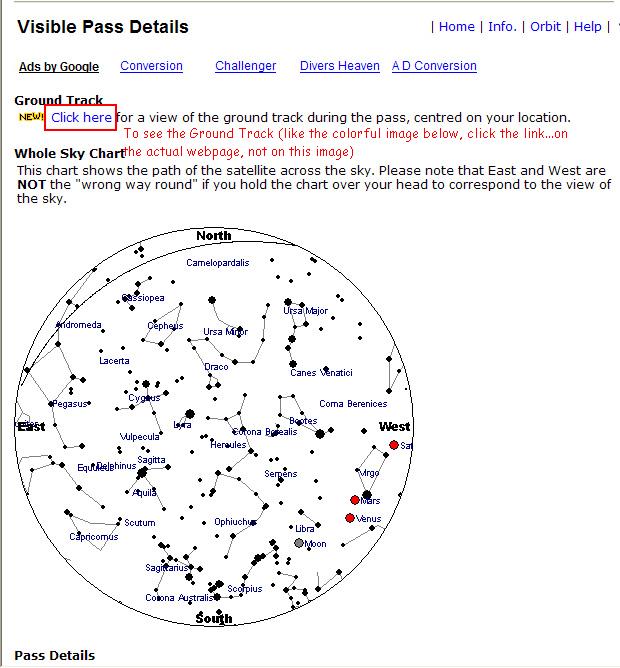
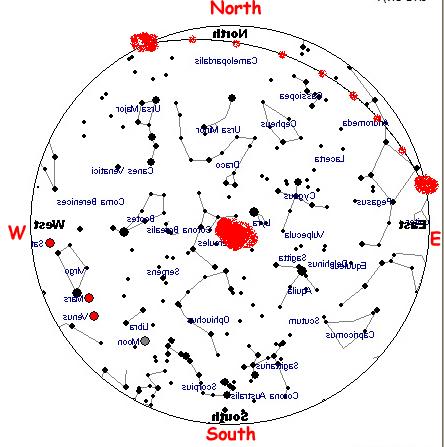
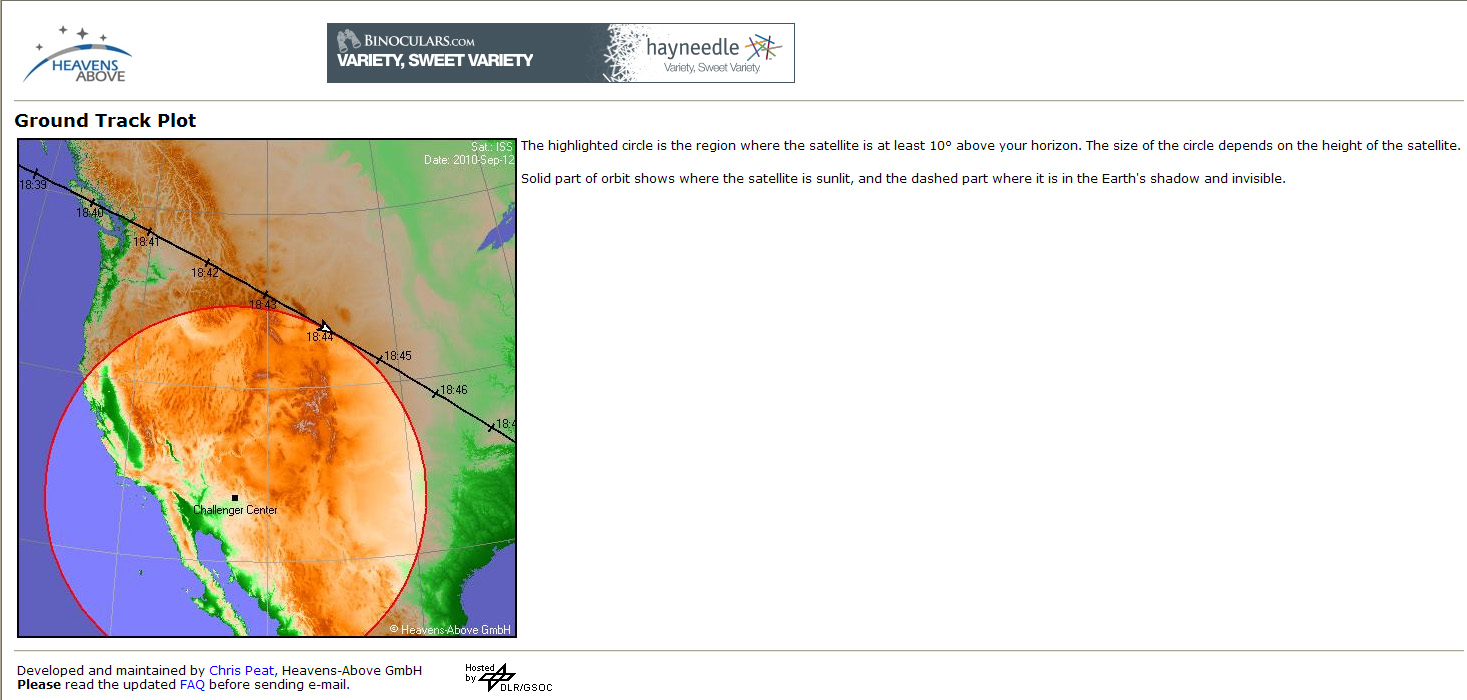
A semi-favorable pass will return some results that look something like the images below:
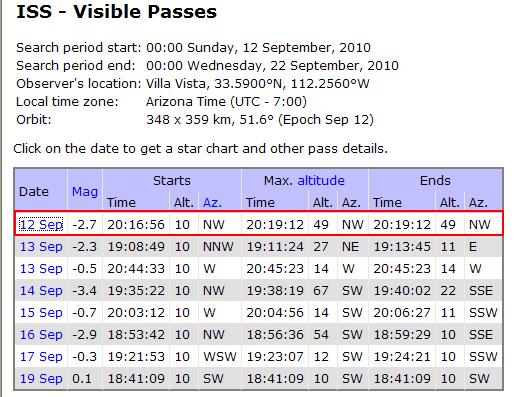
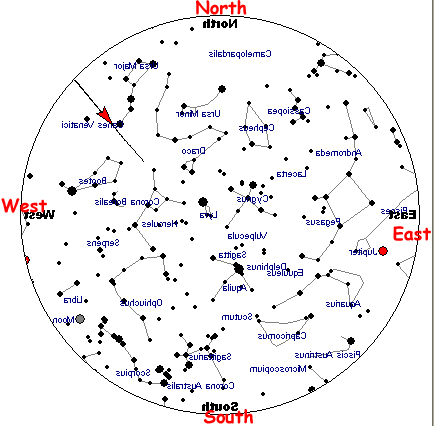
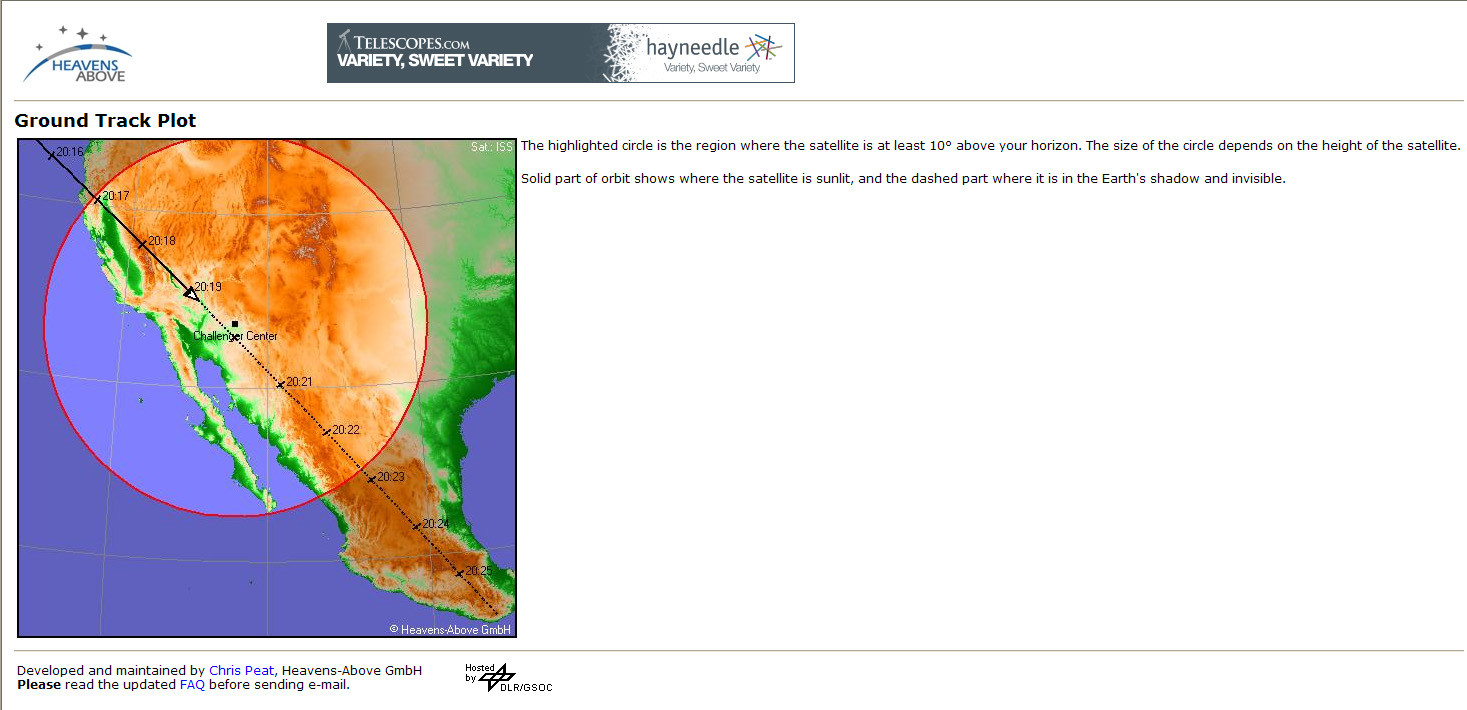
In this case, the ISS is approaching from the northwest but will move into earth's shadow sometime after passing the last star in the handle of the Big Dipper. The appearance will last from just about
8:17pm through just after 8:19pm.
An extremely favorable pass will return some results that look something like the images below:
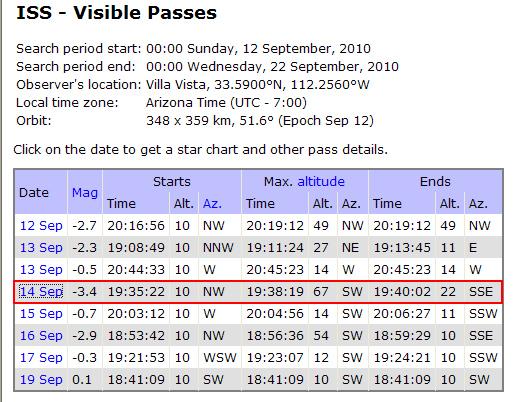
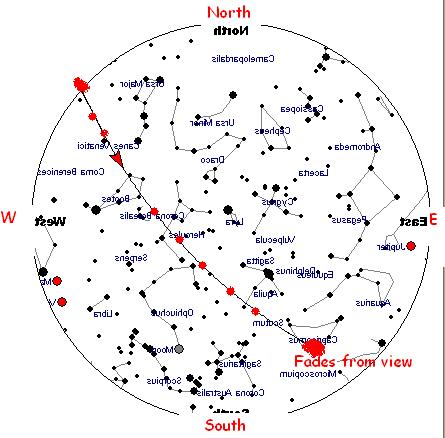
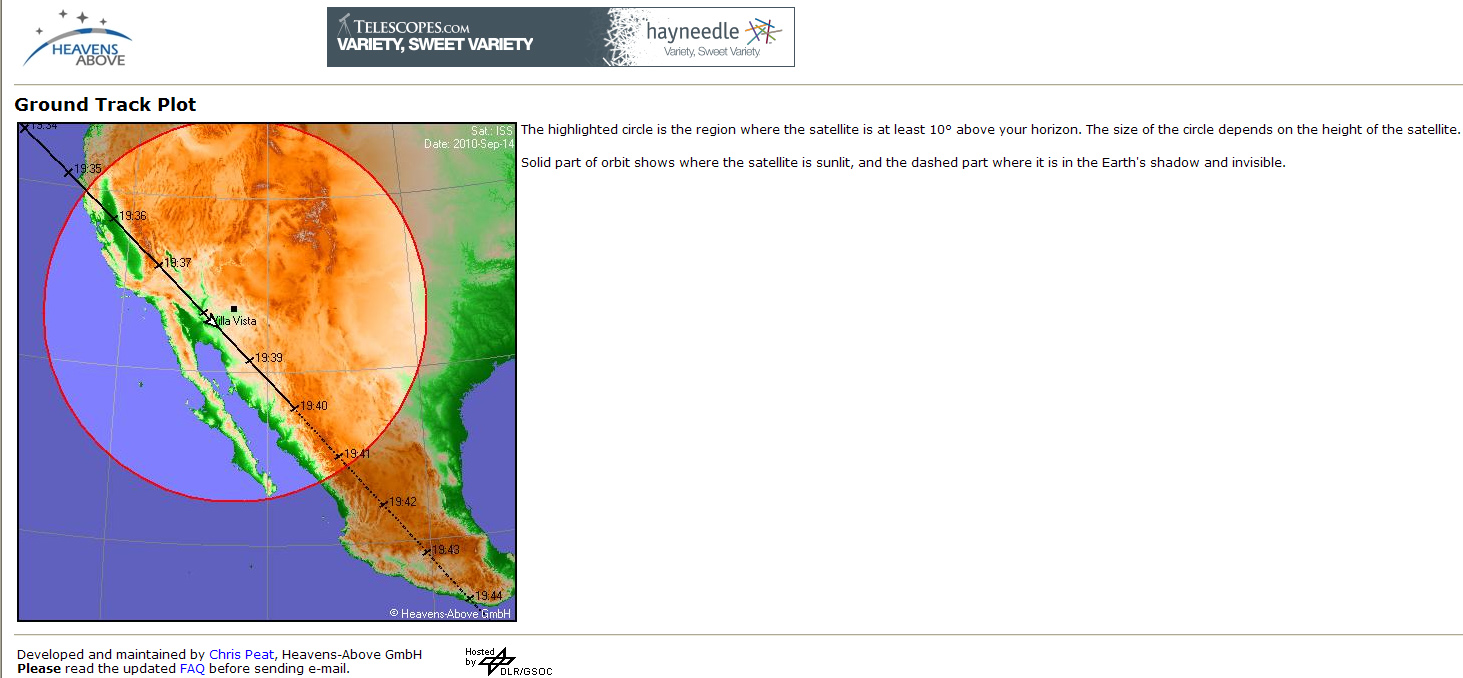
As you can see, the ISS appears from the northwest, then continues to be visible right across the sky until it passes overhead and then for two more minutes after that. You will be able to watch it fade out
and disappear from view as it enters the shadow of the earth.
Note: All Heavens Above screen shots remain their property and are used with express permission for educational purposes only.
















